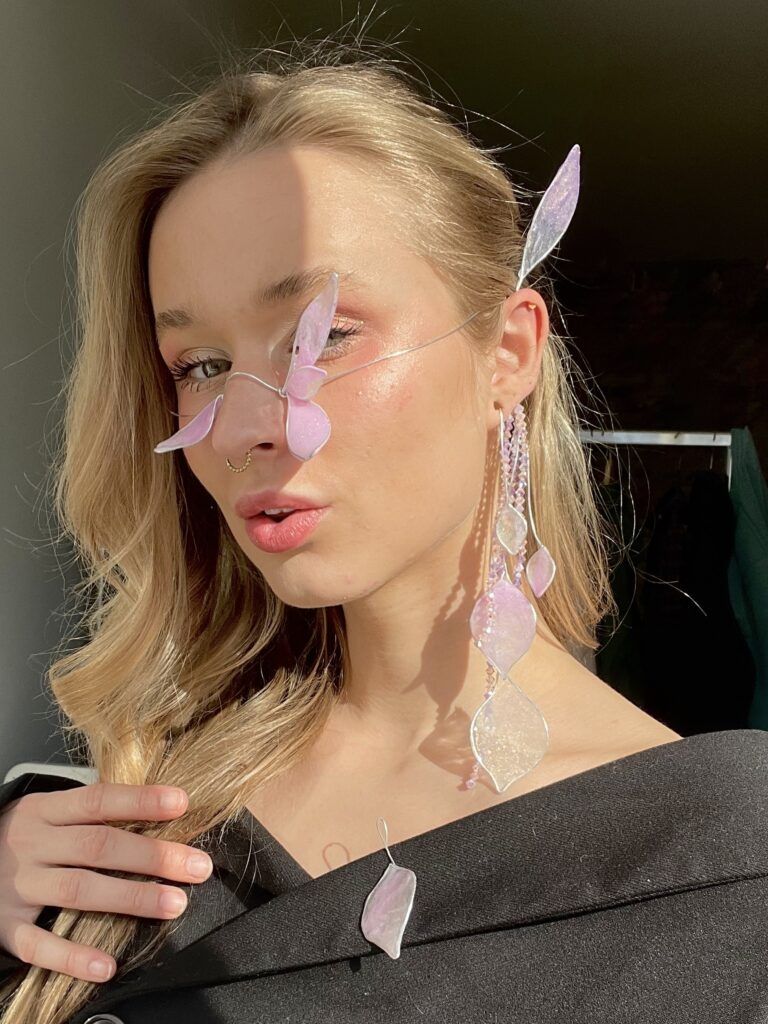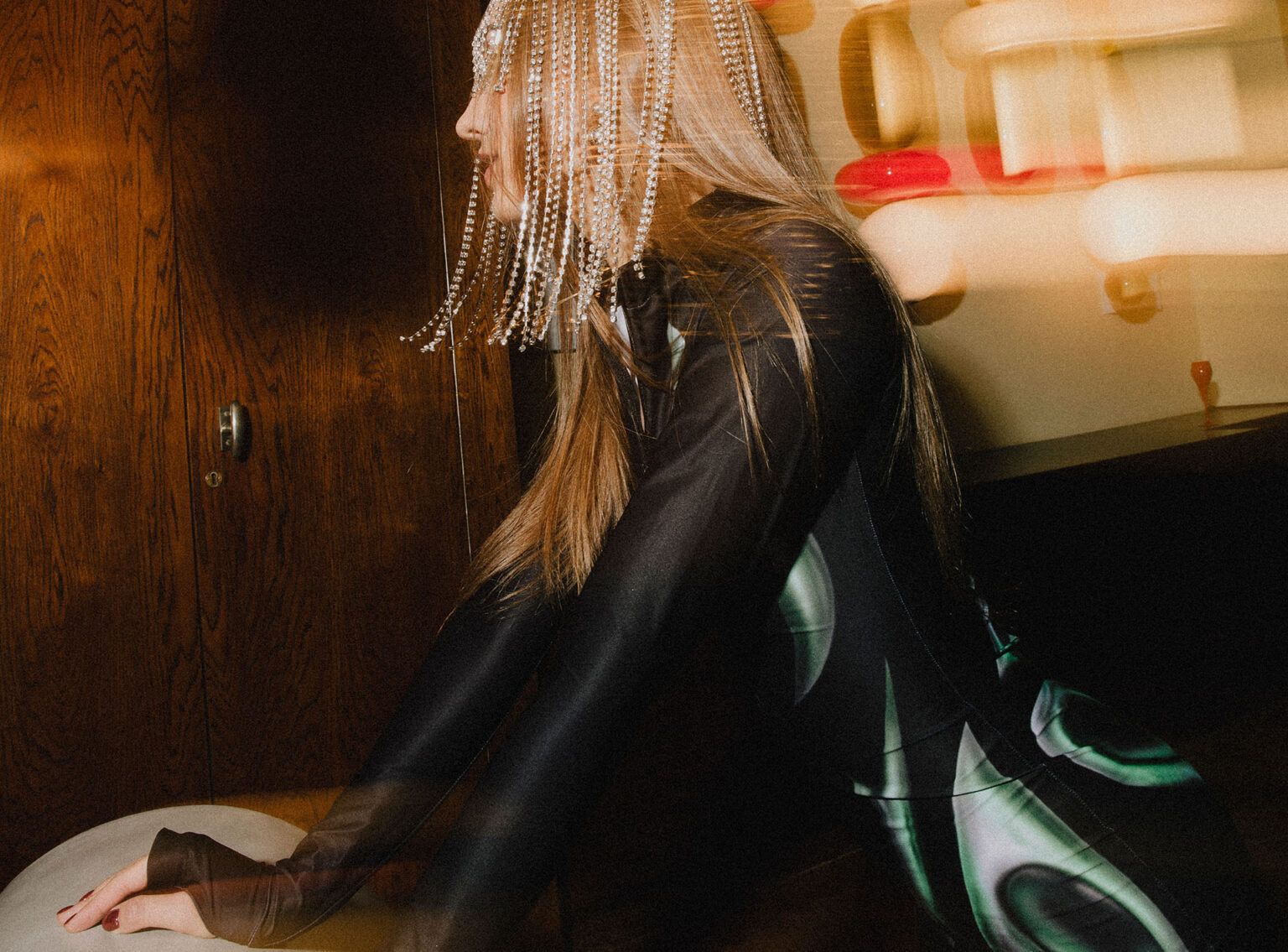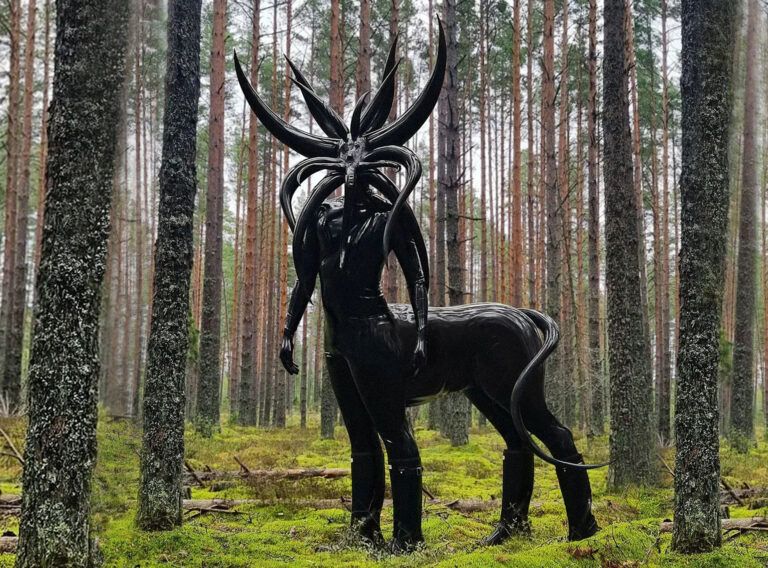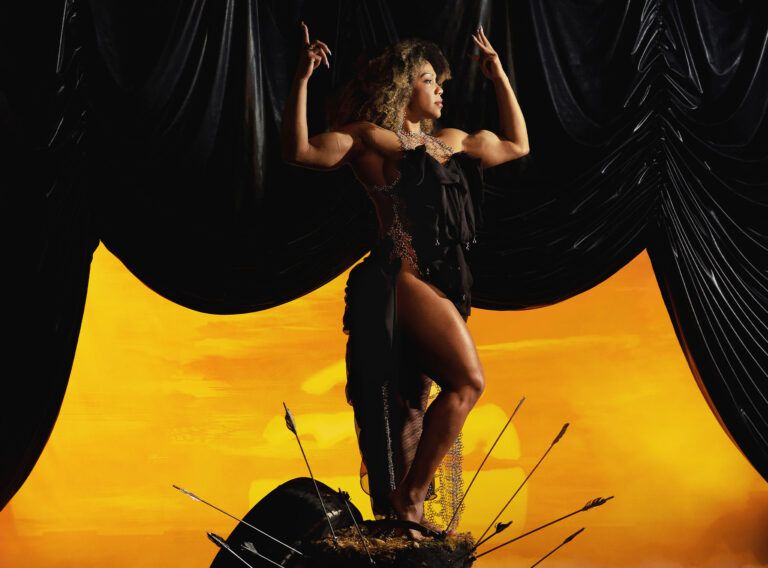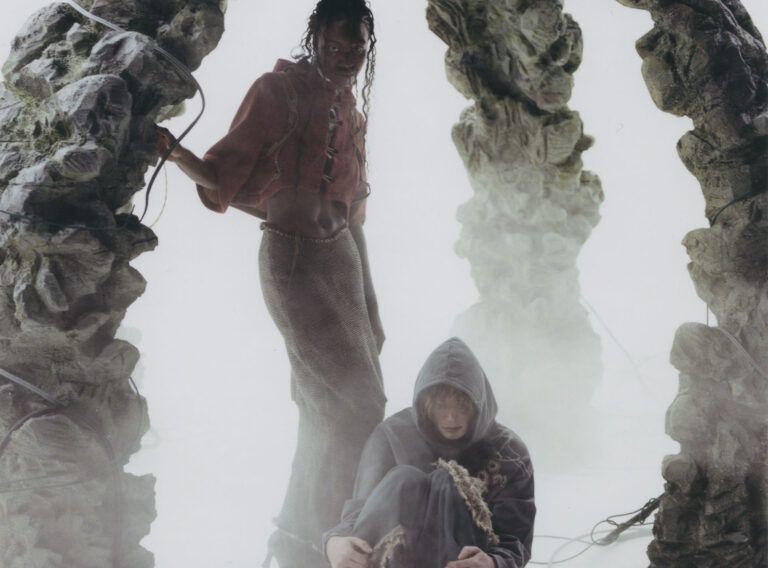Jan Smejkal – Fashion and Footwear Design Studio / designed for DJ Silva
Did you design the corset specifically for your personality?
The corset served primarily to complement the overall visual of the look DJ Silva was wearing. It was part of my bachelor thesis – BALLROOM. We also planned to create a crown instead of a face mask so she could DJ comfortably.
What is it made of and how did you go about making it?
The corset itself is made of vinyl. I based it on a female hourglass silhouette. The crown is made of denim studded with sequins complemented by silver strass that served as a substitute for ear jewellery.
How does it represent the theme of the ball, Inner (Super)Heroes?
The original crown was meant to represent DJ Silva as a queen, standing over her “subjects” on the dance floor (behind the deck on the stage). Thus, it is a super power where people listen and dance to what the DJ plays. Maybe something like the Pied Piper with mice.
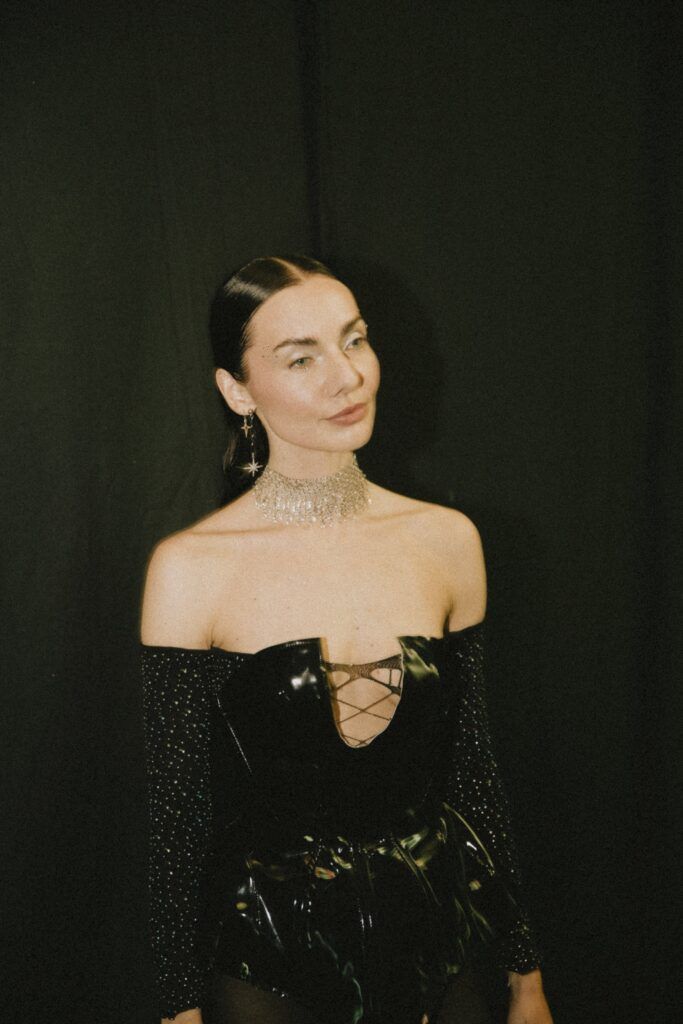
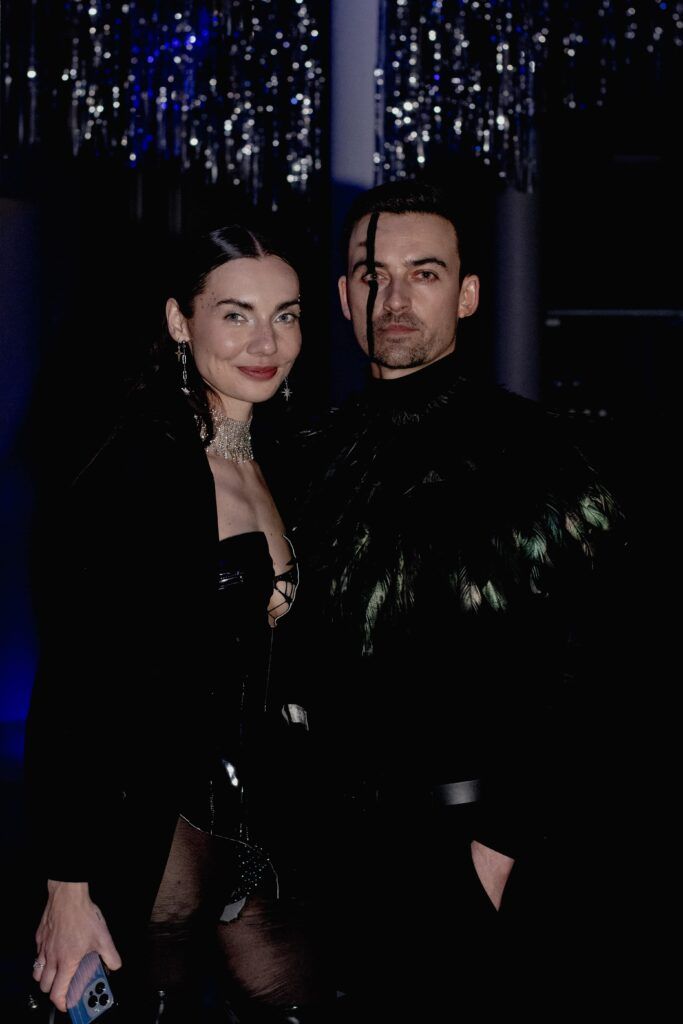
Hana Valtová – Fashion and Footwear Design Studio / Ivo Jedlička – Product Design Studio / jointly desined for Tea Sofia and Johana Bázlerová
Were you inspired by your personalities when designing? If so, which of their characteristics/aspects inspired you?
In our collaboration, we thought a lot about how to combine the techniques we use in our work. Hana studies in the Fashion and Footwear Design Studio and Ivo in the Product Design Studio, so the whole collaboration was about combining textiles with other materials. We created moodboards for each design, which we sent to the personalities for consultation, and then we used them as a basis for creating the masks. The whole process was pretty intuitive and we based it on what we thought would work for them. We consulted with them several times throughout the process, both in terms of coming up with the design and the execution.
What are the masks made of and how did you approach making them?
The mask for Tea Sofia is based on historical Japanese masks that use fringes to cover the face. We wanted to add a bit of a contemporary look to the headdress, so instead of an embroidered headband, we opted for a metal crown in the form of a polished metal plate. We made the fringe from polyester threads that don’t get tangled, and then we sewed them one by one into a leather insert that is glued to the inside of the metal sheet. The sheet metal is polished steel that is spot welded to the desired circumference.
For Johana Bázlerová, we originally intended a long balaclava hood but after consultation, we settled on a superhero headdress. We first styled the headdress on a faux head made of wires and wrapped these with foil to create the desired volume. We then encased this construction in modelling clay, which we then baked. This technique is used when modelling statues. After baking the mask, we coated it with pearl dust to make it shine nicely.
How does it represent the theme of the ball, Inner (Super)Heroes?
Johana’s superheroine is her very own, distinctive and has sharp horns because she is not afraid of even the biggest politicians.
Tea is a princess with a veiled face.

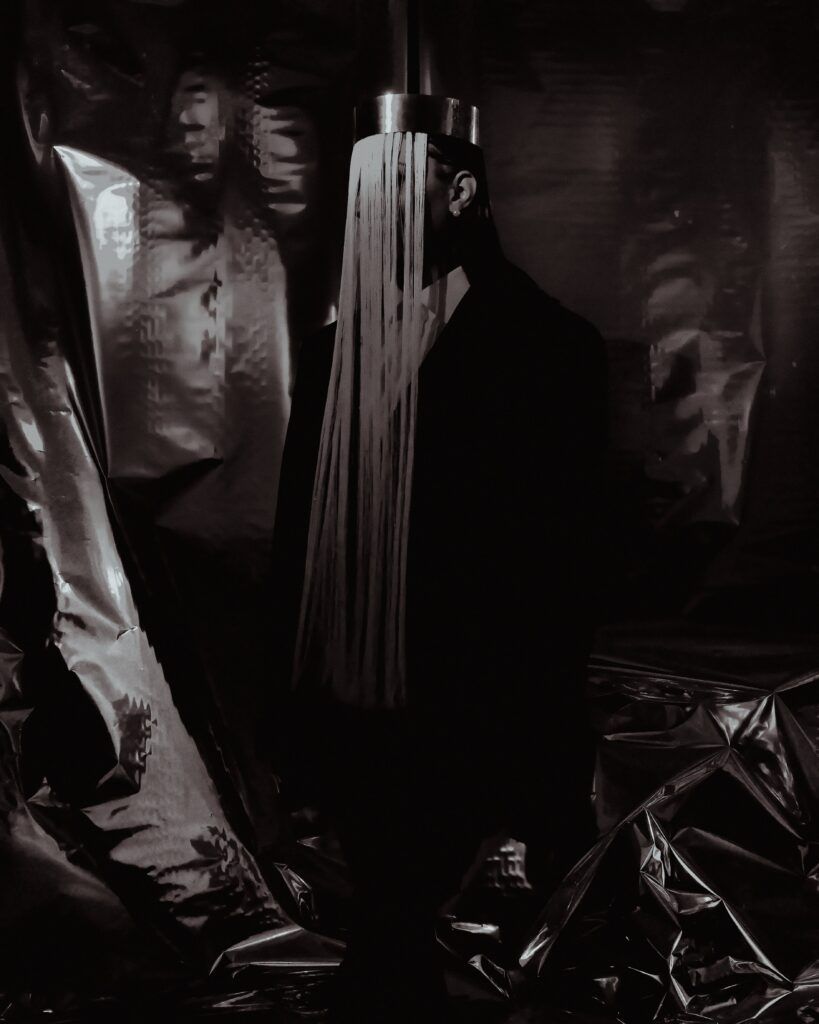
Magdaléna Rajnohová – Fashion and Footwear Design Studio / designed for Markéta Márová
Were you inspired by your personality when designing? If so, which of her characteristics/aspects inspired you?
Yes, Markéta’s passion for travel and sports especially intrigued me. Her love of the sea and surfing was particularly close to my heart. And also that she is the proud owner of wavy hair. In the design field, she prefers organic forms and I wanted to reflect that in the shape of the mask.
What is the mask/accessory made of and how did you go about making it?
I used a fairly modest material, wire, the thickness of which allowed for easy shaping but had strength in it to hold the form.
How does it represent the theme of the ball, Inner (Super)Heroes?
My aim was to reflect the passion and chaos of life. The shape of the mask is reminiscent of thought processes that change as quickly as the clouds in the sky.
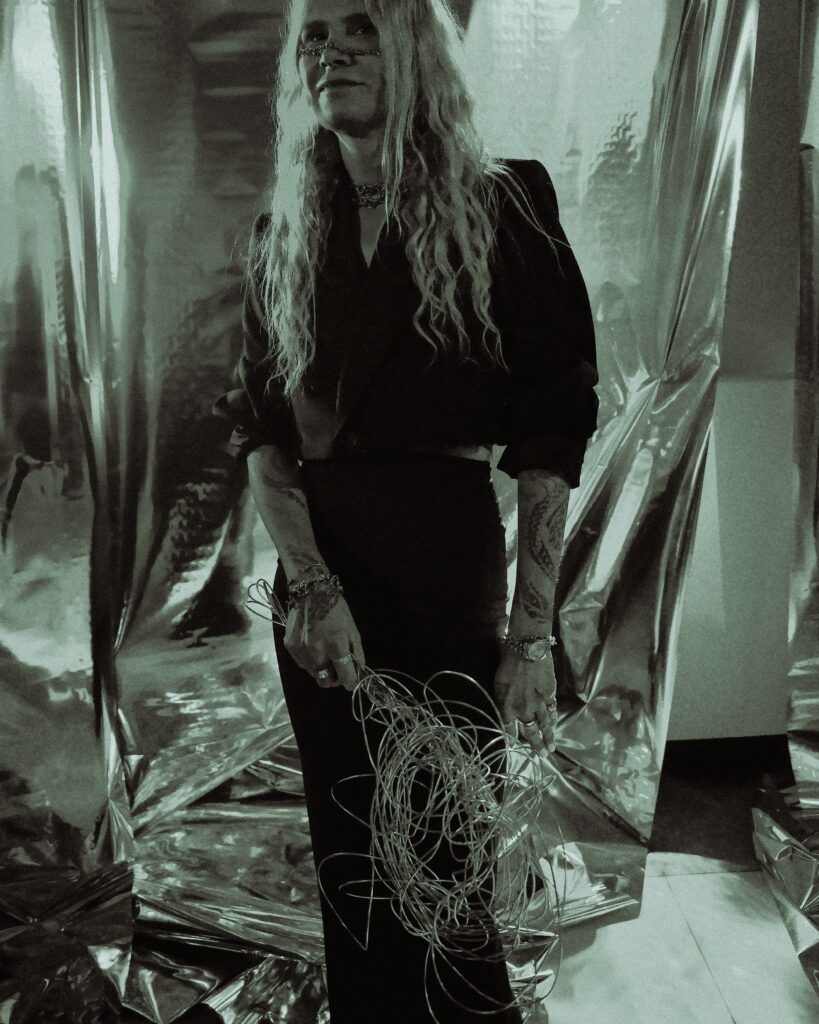
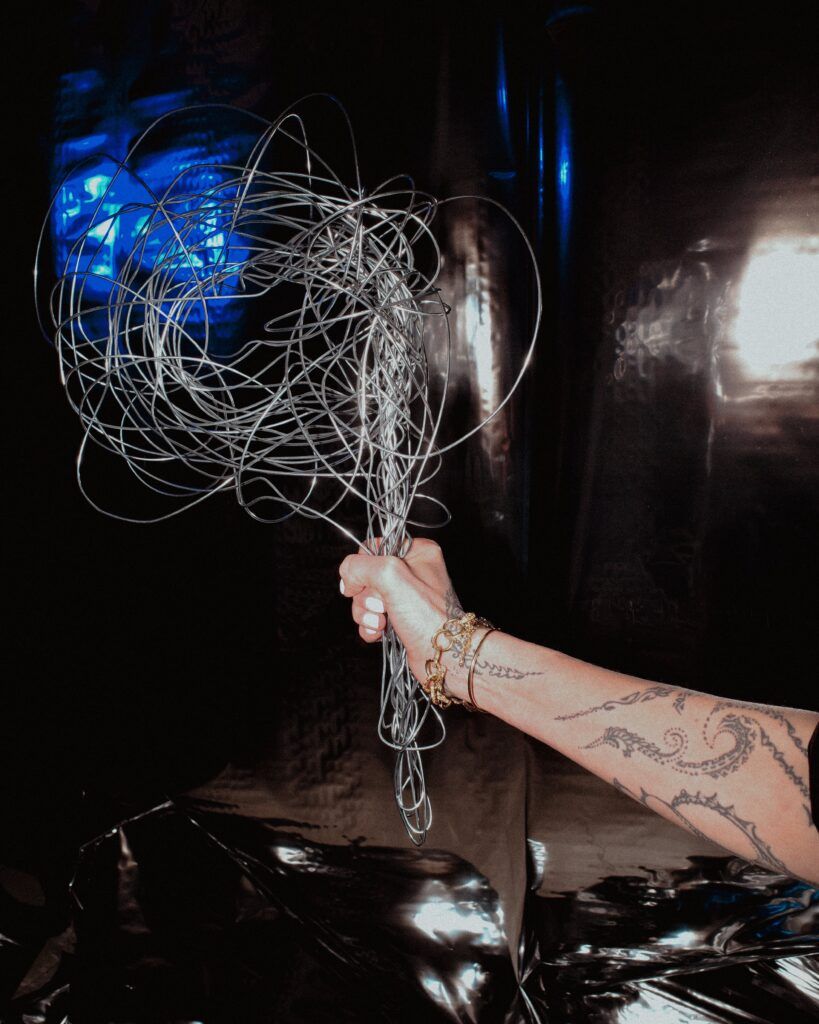
Valérie Jurčíková – Fashion and Footwear Design Studio / designed for Adéla Mazánková
Were you inspired by your personality when designing? If so, which of her characteristics/aspects inspired you?
I think the inspiration was kind of automatic. Adéla had a vision we met over, and we actually kind of came up with it together. Since I’ve been following Adéla for a long time, I already had an idea in advance within the aesthetic and then it just came together.
What is the mask made of and how did you approach making it?
The mask was meant to symbolize the water, the waves of the sea and, at the same time, be a kind of symbolic facial armour. I chose a form of natural cords stitched together, which I used to create the aforementioned ripples and continuously shaped them to fit a face. Finally, I hand-sewed pearls onto the strings to give the mask a more marine look. The whole mask consisted of the face part, the crown and the epaulettes.
How does it represent the theme of the ball, Inner (Super)Heroes?
As I already mentioned, the mask was supposed to represent some kind of aquatic superhero, it was Adéla’s wish and I tried to fulfill it.
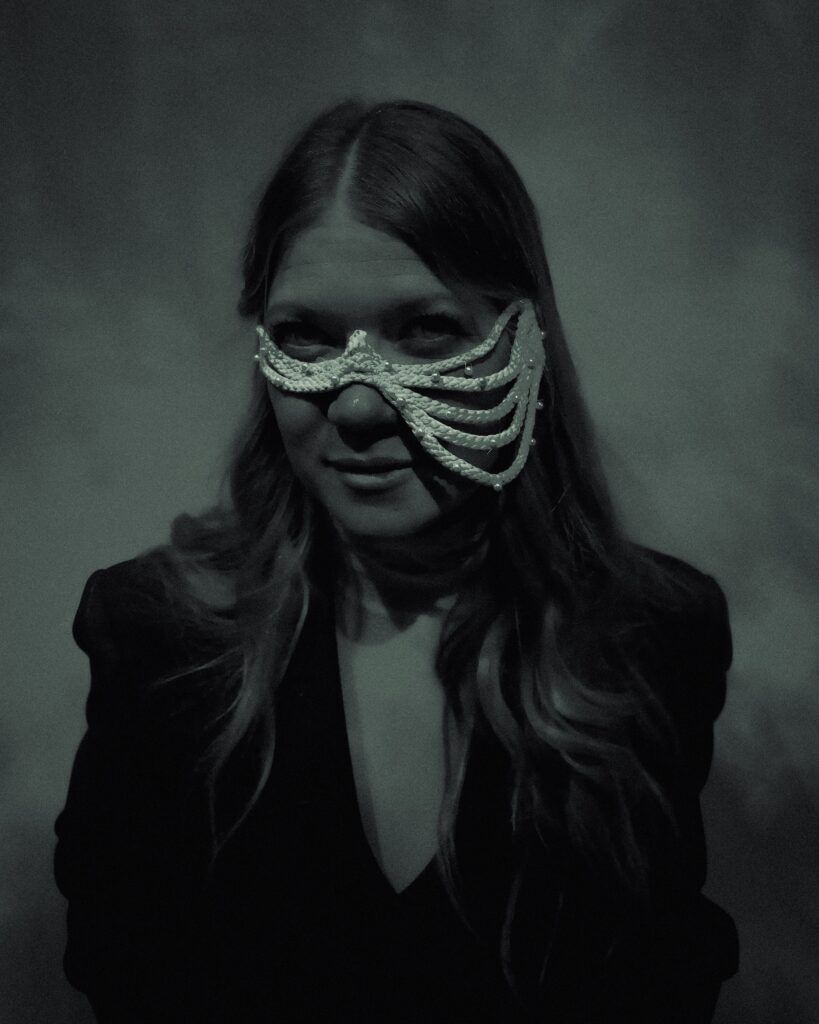
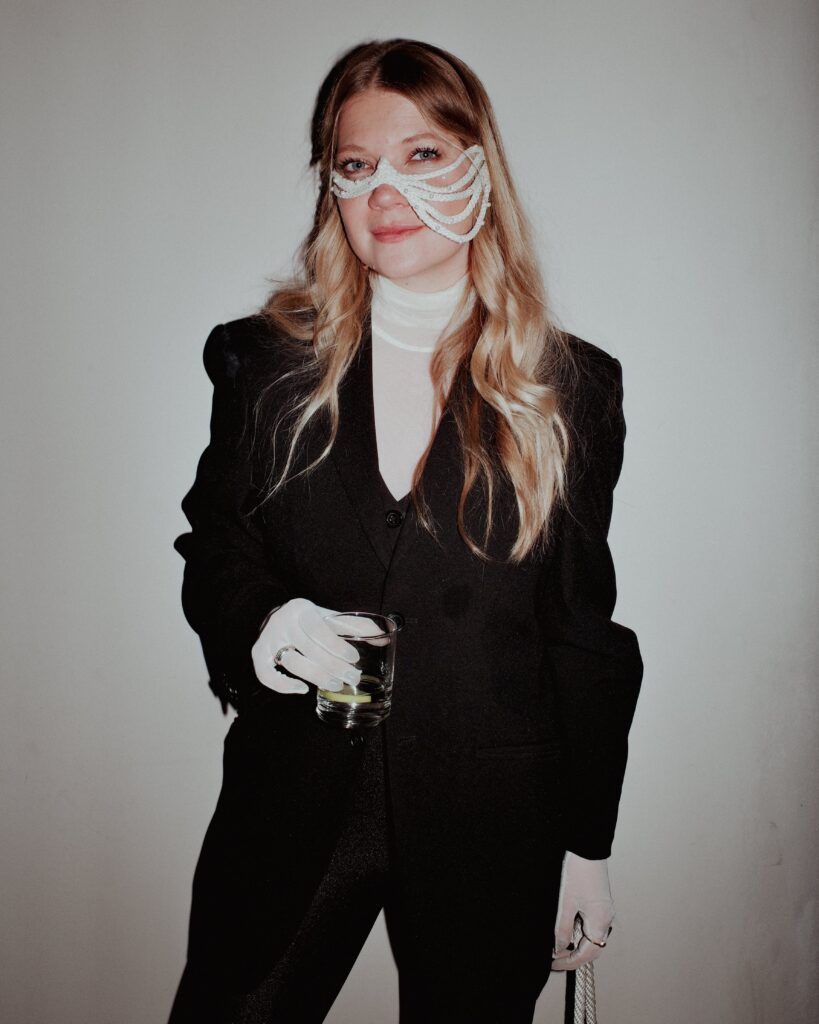
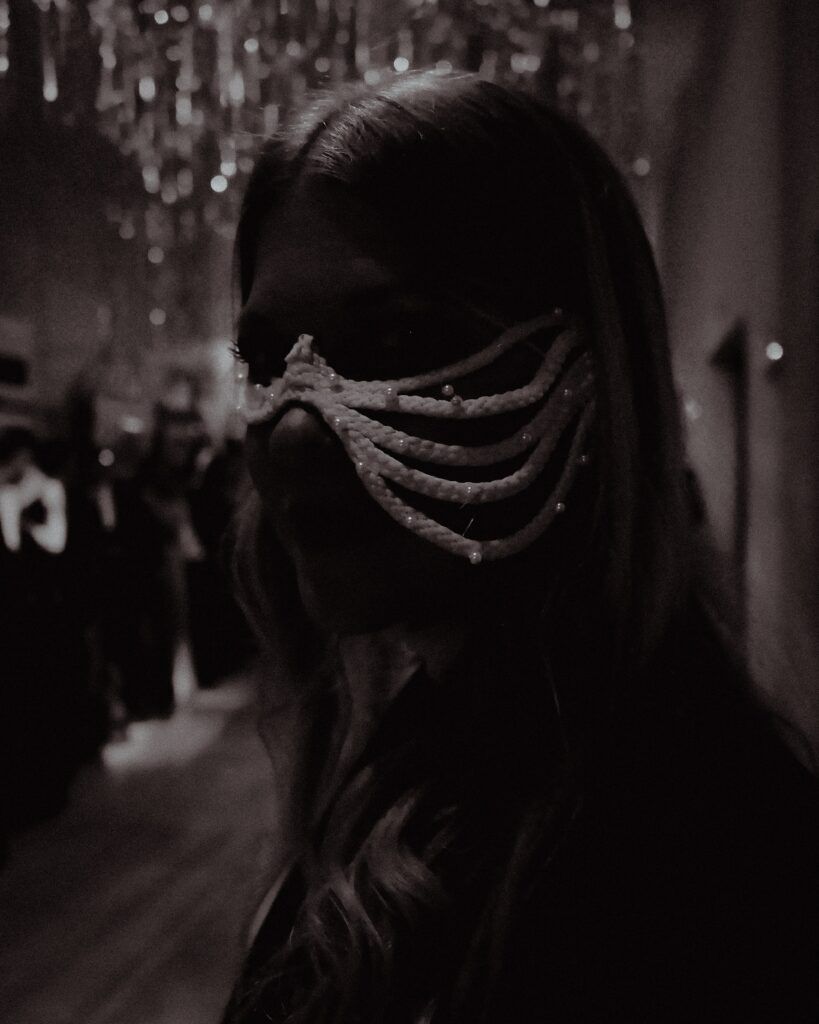
Barbora Fialová – Fashion and Footwear Design Studio / designed for Zachy
Were you inspired by your personality when designing? If so, which of his characteristics/aspects inspired you?
Like probably every creator, I also project myself into my work. But I wasn’t inspired by my characteristics. If I were looking for my imprint in a mask, I would find it in my approach to creating. I chose unconventional techniques in the processing of the garment that felt natural and automatic to me; instead of following established processes, I try to question them.
What is the mask made of and how did you go about making it?
The mask is made of black silk. It has a net on it that is embroidered with bast fibres. Finally, I dyed the mask with acrylic.
How does it represent the theme of the ball, Inner (Super)Heroes?
My hero is a warrior in his primitive essence. On a narrow stripe, the savage mask of our time.
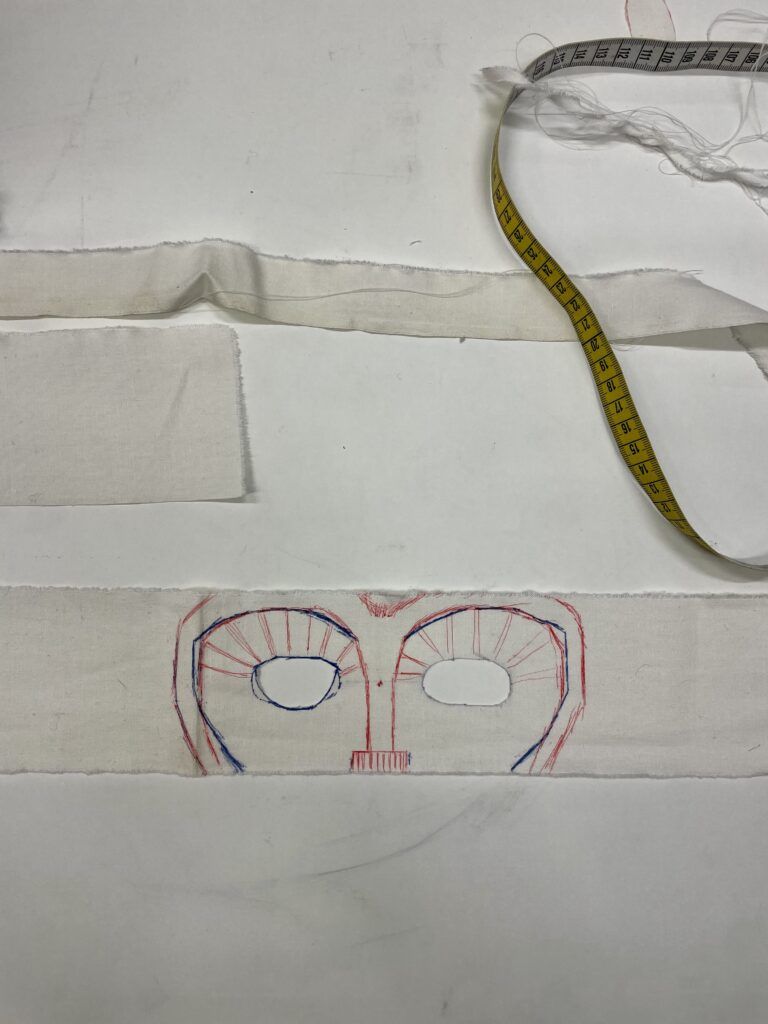
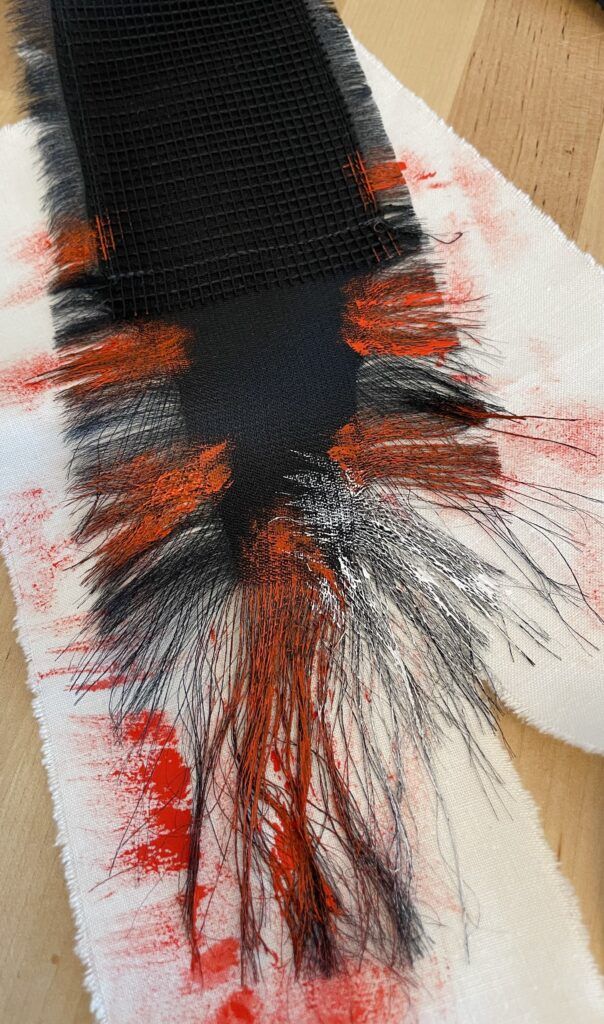
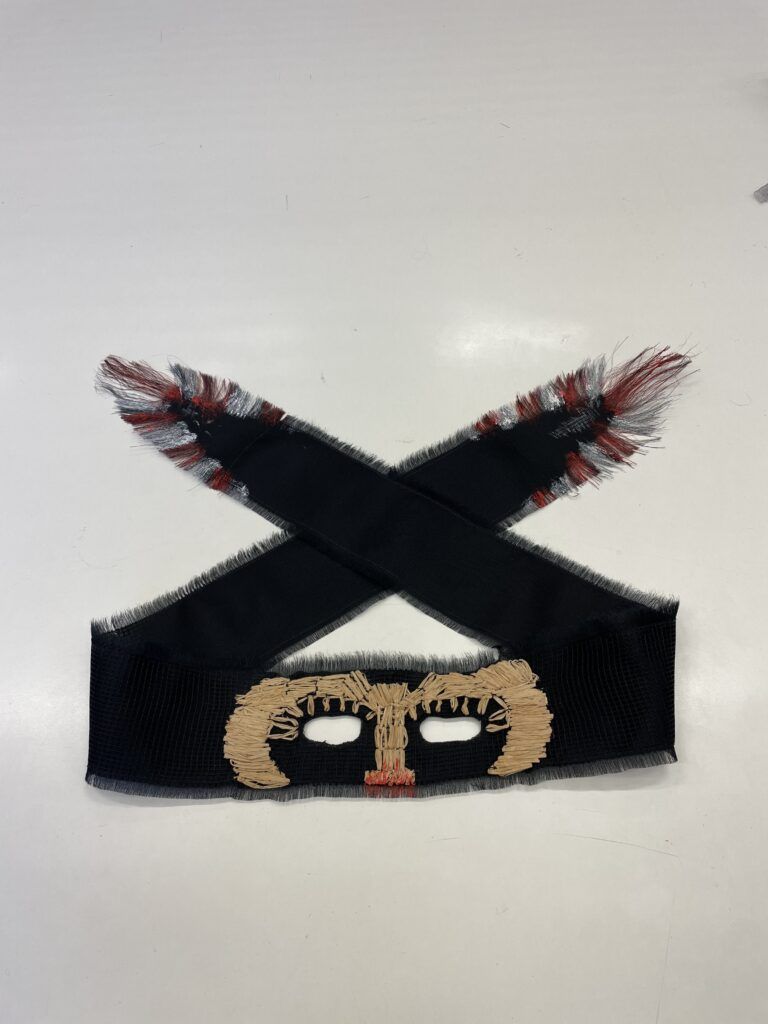
Valérie Vrbová – Fashion and Footwear Design Studio / designed for Valerie Sedláčková
Were you inspired by your personality when designing? If so, which of her characteristics/aspects inspired you?
Val is a gorgeous and creative girl, full of more than just inner superhero strength and beauty. In the creation of the mask, I was mainly inspired by her fragile and charming personality full of kindness and understanding. Then, of course, her profession as a flower arranger, which fulfils and shapes her. She herself strikes me as one of the flowers growing in the garden, causing happier and sunnier days.
What is the mask made of and how did you go about making it?
I made the mask out of silver soft wire, which I shaped into individual petals. Each petal is one amazing feature of Valerie. They gradually overlap, complement each other and complete a morphology that encourages the grace and integrity of her personality.
How does it represent the theme of the ball, Inner (Super)Heroes?
Every woman is a heroine without having to show her physical strength. We are heroines in our tenderness, fragility and selflessness. Therefore, even though the mask is quite subtle and transparent, it shows us the beauty of our inner strength.
